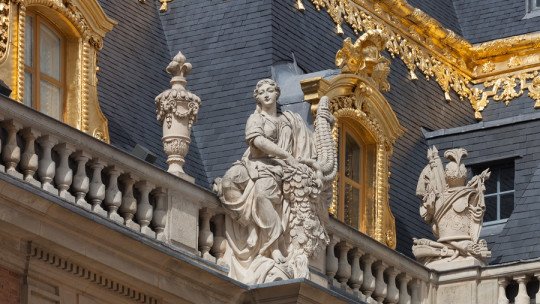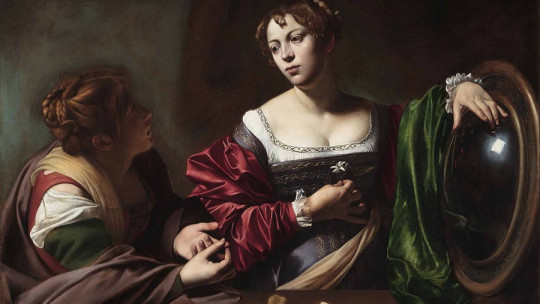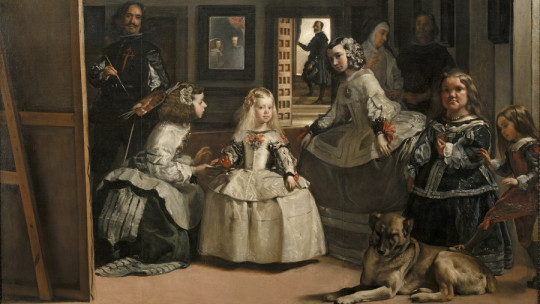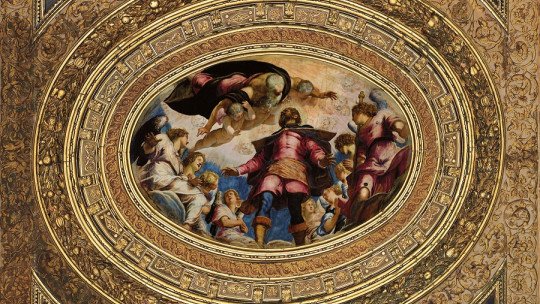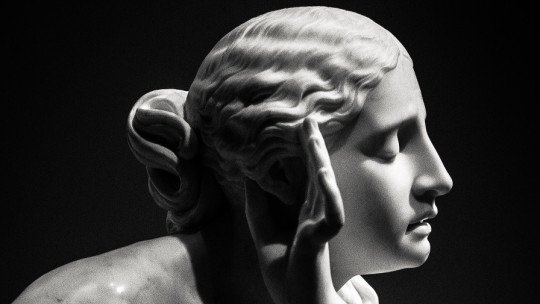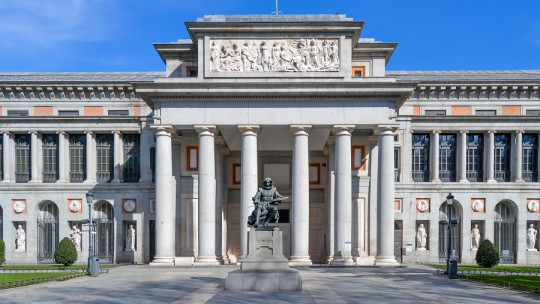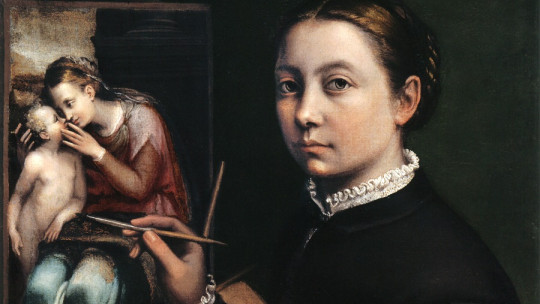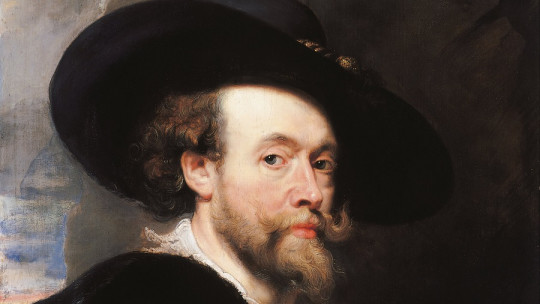
It is difficult, if not impossible, to choose 10 artists from among the great names that the Baroque era gave us. However, in this article we are going to try. We offer you a list of the 10 best baroque artists who were authentic geniuses of painting, sculpture and architecture along with his (often eventful) biography.
The baroque artists you should know
Of course, there are many more. The Baroque is a movement that gave splendor to the arts and left illustrious names such as Velázquez, Rubens or Bernini for posterity. Here we only leave you 10 of these most important artists, but we encourage you to investigate to find out about the other baroque artists who remain in the pipeline. Enjoy the tour!
1. Diego Velazquez
Diego Rodríguez de Silva Velázquez (1599-1660) is undoubtedly one of the greatest exponents of the Baroque. He was born in cosmopolitan Seville at the end of the 16th century, one of the most dynamic economic and artistic centers in Europe. Already in his youth, having just left the workshop of Francisco Pacheco (whose daughter he had, by the way, married), Velázquez demonstrates an unusual talent that is evident in works such as Old woman frying eggs (1618) or The water bearer of Seville (1620). The exceptional portrait of Jerónima de la Fuente, made when the painter was only 21 years old, is a wonderful example of the artist’s innate mastery when capturing the psychology of his sitters
At the age of 24 we find Velázquez in Madrid where, with the help of his father-in-law and some of his contacts, he is presented to Philip IV. Soon the monarch, who is not indifferent to artistic quality, pays attention to his work. For this monarch and his circle the artist created authentic masterpieces, such as the series of portraits of Philip IV, the magnificent equestrian portrait of the Count-Duke of Olivares or the famous Las Meninasexecuted already in its stage of artistic plenitude.
Rubens, whom he knew personally, intercedes with Philip IV to send Velázquez to Italy. This first trip to the Italian peninsula facilitates the artist’s knowledge of the classics and masters of the Renaissance. His work is the result of his Italian journey. Vulcan’s forge (1630), one of the very few paintings with a mythological theme that we find in his pictorial corpus. During his second stay in Italy he made what would be the only nude in his work, the Mirror Venus (1647-1651), and which will also be one of the few nudes in Spanish painting along with the Goya’s Pestle.
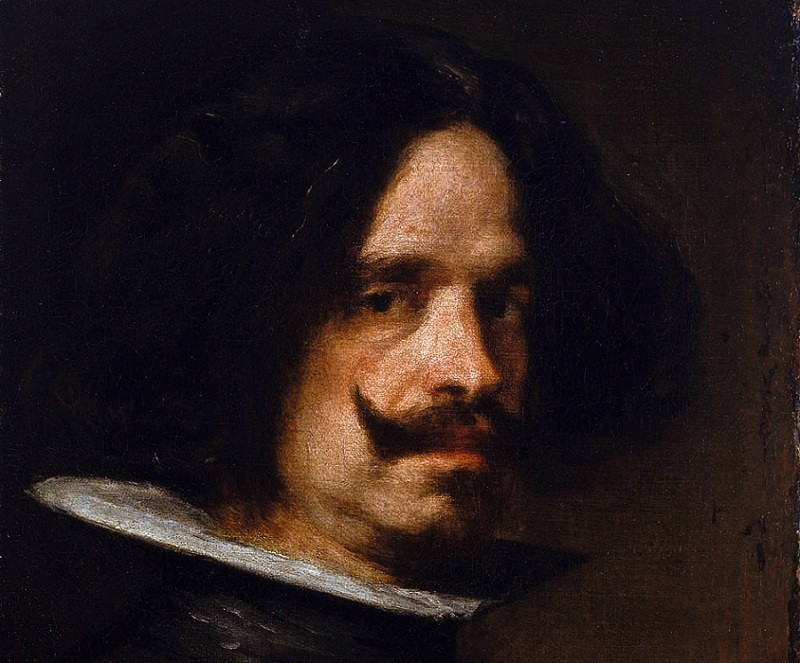
2. Gian Lorenzo Bernini
Gian Lorenzo Bernini (1598-1680) is one of those overwhelming artistic personalities who appear from time to time in the history of art.
Outstanding sculptor, but also painter and architect, has often been compared to Michelangelo for his many facets, all executed with great artistic quality. The young Gian Lorenzo had trained in the workshop of his father, who was a sculptor, and soon demonstrated the innate talent that he possessed. The sculptural groups commissioned by Cardinal Borghese establish him as one of the best sculptors of his generation. Indeed, in some of these works, such as The Abduction of Proserpina either Apollo and Daphne, the artist shows off all his mastery with the chisel. The sculptures present impressive realism and create an extraordinary illusion of movement.
Bernini developed his artistic corpus under the mandate of no less than seven popes. Starting in 1629, and at only 31 years old, Bernini took charge of the greatest monument of Christianity: St. Peter’s Basilica, whose renovation had begun a few centuries earlier and had counted on true geniuses such as Michelangelo, Raphael and Bramante. Bernini also took charge of the impressive solid bronze baldachin that adorns the main altar of the basilica and the chair of Saint Peter (also in bronze), in addition to the no less impressive Saint Peter’s Square and its colonnade. Raised to the top by Pope Urban VIII, Baroque Rome is due, in part, to his prolific and astonishing work.
3. Peter Paul Rubens
For many people, evoking baroque painting is evoking Rubens (1577-1640). Indeed, He was a prolific painter who had numerous disciples and assistants in his workshop to meet the enormous demand it received. All aristocratic houses wanted a work by Rubens. And, among his biggest clients, was the Spanish crown of the Austrias.
Peter Paul Rubens was born in Westphalia, in what is now Germany. He soon settled in Antwerp, where he received humanistic and pictorial education from Mannerist artists. After a stay in Italy and, later, in Spain, where he made the famous and impressive equestrian portrait of the Duke of Lerma, king of King Philip III, Rubens settled in Antwerp and married Isabel Brant. In those years, the artist was at the peak of his fame, and created impressive canvases with religious themes and exaltation of the monarchy. But probably The paintings for which Rubens is most remembered are those that deal with mythological themes
The artist had a solid humanist training, reinforced through his trips to Italy, and he knew how to transfer this knowledge to his canvases. They are notable for their exquisite colors and sensual brushstrokes. The Three Graces (1639), a work quite late in its production and which features the representation of his second wife, Helena Fourment; the Creation of the Milky Way (1636-38) and The judgment of Paris (1638).
4. Anton van Dyck
Anton Van Dyck is one of the greats of English baroque painting. He is considered by many authors to be a disciple of Rubens, but this is a topic still subject to debate. The fact that, in the commissions they received, both painters received identical fees, makes us suppose that more than a disciple, Van Dyck was his collaborator.
Despite being an exceptional painter in all areas, Van Dyck is especially remembered for his portraits Charles I of England, fascinated by his work, called him to his side and appointed him chamber painter in 1632, so the Flemish settled permanently in London and married Mary Ruthwen, of whom he made, in 1639, a delicious portrait in which the lady appears dressed in a silky blue dress. Mary suffered from alopecia, and her husband does not hide this “defect” in her portrait. However, he represents the young woman with a sweetness and dignity that are characteristic of her works, in which the reality of the character is mixed with an aura of elegance and refinement.
5. Artemisia Gentileschi
One of the most famous Baroque painters, Artemisia Gentileschi (1593-1656) is, however, remembered almost exclusively for the sad episode of her rape. He produced his first major work when he was only 17 years old, Susanna and the old people (1610) where he illustrates the well-known Bible passage in a realistic and stark way.
Trained in the workshop of her father, Orazio Gentileschi, at the age of 18 he placed a private teacher at her disposal, since Artemisia’s condition as a woman prevented her from accessing an academy. This tutor, Agostino Tassi, sexually abuses her, so her father takes the criminal to court. Artemisia (who is, in reality, the victim) is subjected to a humiliating interrogation, a shameful gynecological inspection and, finally, a more than horrific torture, to “verify” that she is telling the truth. Artemisia stands her ground, and Tassi is sentenced to a year in prison and exile.
It has been commented that one of the artist’s most famous works, Judith beheading Holofernes (1612-13), is a kind of revenge, a cry of rage thrown to the four winds to vent the pain that that episode in his life caused him. We do not know if this was exactly the case, but what is certain is that the canvas has a heartbreaking rawness, and probably surpasses the homonymous work of Caravaggio, from whom, by the way, Artemisia took its tenebrism and the magnificent and overwhelming chiaroscuro. .
6. Francesco Borromini
The biography of Francesco Castelli (1599-1667), who later changed his surname to Borromini, is famous for its tragic end. On the morning of August 2, 1667, the artist, probably immersed in a serious depression, threw himself on his sword. It died out with him one of the brightest lights of the Italian Baroque
An eternal enemy of Gian Lorenzo Bernini, Borromini’s life was a continuous struggle to remain at the top. Rome was, in those days, the epicenter of European art. The popes followed one another and commissioned works one after another, with the intention of beautifying the Eternal City and turning it into a living symbol of the Counter-Reformation. Francesco Borromini arrives in the papal city at only 20 years old, after a stay in Milan, where he had been working on the Duomo. In Rome, Borromini began to work on St. Peter’s, and later on the Barberini Palace, together with his later rival, Bernini.
Many authors have wondered what was the true reason that led the brilliant artist to end his life. It seems that Borromini had a melancholic character, which became accentuated as the years went by and he saw that the main papal commissions fell on his enemy. It is more than likely that this, together with his own emotional instability and the death of his friend and confidant Fioravante Martinelli, plunged him, as we have already said, into a serious depression. Be that as it may, on August 2, 1667 the world lost one of the greatest Baroque artists, author of, among other wonders, the splendid church of San Carlo alle Quattre Fontane, in Rome.
7. Michelangelo Merisi (Caravaggio)
Michelangelo Merisi, better known as “Il Caravaggio” (1571-1610) is another of those artists who, like Vermeer, has left us few examples of his magnificent work. Indeed, there are few caravaggios that are preserved in the world, in part due to his fleeting passage through the world (he died at the age of 39). Caravaggio He is famous, among many other things, for being the “inventor” of tenebrism an effect of contrasts between light and darkness that would give a stamp of personality to all his paintings, and that would be imitated by other artists, including the also brilliant Artemisia Gentileschi.
When Caravaggio’s family moved to Rome, the young man began to train in modest painters’ workshops. The first great known work of his is the Boy peeling fruit, from 1592, made when Caravaggio lived with Monsignor Colonna, whom the young painter nicknamed “Monsignor Lettuce” because of the little varied diet that the clergyman offered him. Many authors have pointed out the possible sexual favors that young painters gave in exchange for a house and protection. The fact is uncertain, but it is a completely plausible possibility. In fact, Caravaggio’s life always slipped through the lowest and darkest depths of society.
He took the models for his paintings from these environments, and that is why we find in his works that air of reality and naturalism that moves us. In fact, some of his works were rejected by his clients for their accentuated naturalism, which sinned against “decorum” (the name given to the correct way of representing religious scenes). A well-known case is The death of the Virgin (1604), for which Caravaggio took as his model a prostitute drowned in the Tiber.
Caravaggio himself did not escape the harmful influence of the shady circles he frequented. Famous for his brawling and violent drunkenness, in 1607 he kills a man in a scuffle and must flee Rome. From then on, his life would be a continuous pilgrimage until his own death, which occurred in 1610.
8. Luisa Roldán (“La Roldana”)
Luisa Roldán (1652-1706) is one of the female names that should be framed with golden letters in the history of art Unfairly forgotten in the books, like most of her companions, Luisa ran a sculpture workshop in the 17th century. She was born in the hectic and dynamic Seville of the 17th century, which also saw the training of other greats such as Velázquez or Murillo, and she trained in the workshop of her father, Pedro Roldán. During her early years, Luisa sculpted imposing life-size figures that followed the guidelines of the Catholic Counter-Reformation; most of them destined for Andalusian processions. Also famous is her production of terracotta figures for the Neapolitan-style nativity scenes that were so popular at the time.
Luisa lived with her husband in Seville (whom she had married at the age of 19 without parental consent) until 1686, the year in which they moved to Cádiz. Luisa Roldán’s period of plenitude is, however, her Madrid period, a city to which she arrived in 1689, accompanied by her husband and her children. In 1692 her long-awaited appointment came: King Charles II named her chamber sculptor. From this Madrid period are her terracotta works in small format, intended for noble and bourgeois families for private devotion. As is the case with most women artists, until recently much of her work had been attributed to her father or her husband. Fortunately, new studies have now put the dots on the i’s and have demonstrated the prolific production of this Sevillian artist, one of the great sculptors of the Hispanic Baroque.
9. Bartolomé Esteban Murillo
If anything is remembered at a popular level about this excellent Spanish Baroque artist, it is his Immaculate Conception and his beautiful Children Jesus and Saint John.
Indeed, the work of Murillo (1617-1682) escapes the famous baroque monumentality and introduces us to a world of intimate sweetness that seems taken from the strictest everyday life. A great example of this “descent of the religious to the earth” which, on the other hand, is typical of the baroque language, is his famous painting The Holy Family of the little bird, where we are shown an ordinary family, dedicated to daily chores. The Virgin, in the background, observes Saint Joseph playing with the Child. There is nothing in the scene that conveys to us that the characters are saints, nor that the child is the son of God. It is a snapshot of an ordinary family from 17th century Spain. And that is the true value of Murillo’s work.
The Sevillian artist also includes in his work, in parallel with the characteristic Baroque naturalism, a refinement that almost predicts the Rococo aesthetics of the following century. His naturalistic paintings extract motifs and characters from everyday life, as Caravaggio and Velázquez did. On your canvas Children eating grapes and melon, we see two little boys who entertain themselves by devouring fruit, possibly one of the few foods they will have access to for several days. Their dirty little feet and torn clothes are notes of realism with which Murillo points out the poverty of the boys. On the other hand, his famous Immaculate Conception, a symbol of the Counter-Reformation, possesses both monumentality and sweetness, and the faces of these virgins are among the most beautiful in Spanish painting.
10. Johannes Vermeer
Vermeer (1632-1675) is, along with Caravaggio, one of the painters who has left us the least artistic corpus. Only thirty works are spread among the best museums in the world, but this scarce production is enough to realize that we are facing one of the great geniuses of universal painting.
Johannes Vermeer was born in Delft in the autumn of 1632. In those years, the so-called United Provinces were already independent of the Spanish crown, and an extraordinary artistic production developed in the country, which has been called the Golden Age of the Netherlands. . The great patrons, unlike in Catholic countries, were the bourgeoisie and merchants of the cities. This is why in Holland we find another type of pictorial language, which has nothing to do with the southern Baroque.
The Dutch bourgeoisie, which was also Protestant, did not want large canvases of biblical apotheosis, but preferred scenes of everyday intimacy. And that is what Vermeer was a true master of.
The Vermeerian interiors are exquisite, despite the fact that almost all of them take place in the same room, in which only the position of the elements changes. In all his works, the characters seem caught by surprise while carrying out their daily activities We see a young woman absorbed in reading a letter in the work Girl reading a letter (1657), who has not noticed our presence, or to another young woman who, resting her head on her hand, takes a short nap (sleeping girl, 1657). In all of Vermeer’s works we have the feeling of entering a world that does not belong to us.


